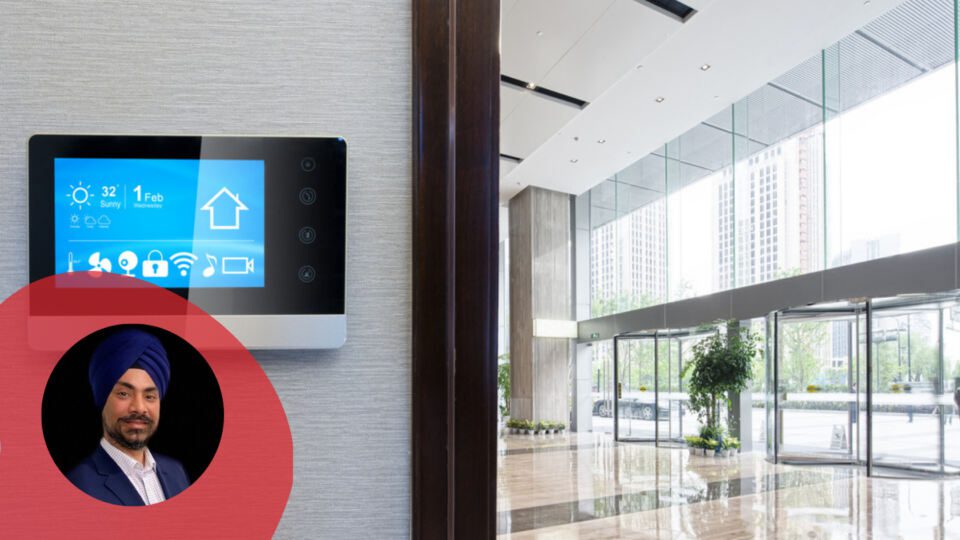The increasing dominance of ecommerce and the growing prevalence of disruptive technologies have sped up the digital transformation of brick-and-mortar retail. As the retail industry shifts, so do customer expectations. Retailers are facing a multifaceted challenge to meet customer experience standards while tackling increasing competition, skyrocketing location costs, hiring challenges, advancing technologies and the growing need to contribute sustainable solutions.
For most retailers, this situation is akin to fighting battles on multiple fronts. The most overwhelming part of the battle is prioritizing where to put maximum energy and resources to achieve greater ROI and sustainability in the long run, while consistently improving the quality of the experiences they deliver.
How can this be done? Creating an Internet of Things (IoT)-based smart building strategy can empower retailers to meet these goals.
Create a Blueprint
A Forrester study published in 2020 found that 26% of retail businesses werealready using or considering IoT solutions in the U.S. in 2019, and that number is continuing to increase. Retailers must have a clear vision and end goals. There is no one-size-fits-all formula for building a long-term strategy.
This blueprint should ideally answer three simple questions: what problem do you want your IoT implementation to solve, what would you achieve once the problem is solved, and what is the best possible solution?
The right IoT implementation plan visualizes a long-term roadmap for the retailer. As years pass, the amount of data will increase; therefore, evaluating the scalability and modularity of the potential solution is essential.
Accurately Evaluate Your Investments
In a Beecham report that explores the experience of successful IoT implementations, having sufficient financial resources had the highest overall score, with 76% of companies calling it very important. Among the companies that called their project unsuccessful, 67% agreed that having sufficient resources was the biggest improvement their strategy required.
Getting the long-term investments required for a successful implementation is key to a winning IoT strategy. However, it doesn’t mean that retailers that failed to assess the costs didn’t have a vision.
What are the key considerations while assessing your IoT project’s investments?
- Hardware costs: While adopting IoT technology, certain devices will be integrated as a part of your solution. The hardware includes sensors— devices used to provide data on factors such as luminous intensity, humidity, temperature, etc.
- IoT tools: An IoT tool is any device that gathers, processes and exchanges sensor data over the internet. It can control sensor data through commands over the internet and perform one or multiple sets of tasks.
- Software or platform costs: An IoT platform is the core aspect of the solution framework. It is the centralized software network that can be used to monitor and control connected devices. It includes a customized set of commands to gather, integrate and process data to achieve a specific goal.
Build a Prototype and Run a Pilot
Having the right technical resources is a key measure in an IoT implementation’s success. Since IoT involves different systems interacting with each other, it is wise for retailers to involve various internal departments in planning. Prototyping entails creating an instance of the network using readily available, less robust systems to gauge what works and, more importantly, what doesn’t.
When launching a solution or service, the business should run a pilot at a percentage of the stores — say 10% or more — and evaluate the process and the results. Key findings or identification of teething problems can be useful when rolling out across the entire store network to address problems before implementation.
Roll Out a Phased Implementation
IoT projects not only require a mix of experts from different sectors to work together, but also require an IoT team that fits the needs of the identified use cases.
To ensure a successful IoT deployment, a team must be flexible, always be ready to adjust to situations and effectively counter any seen or unforeseen challenges that may arise. These challenges are just the tip of the iceberg. From IoT readiness to interoperability, every function will be tested to the extent of its capabilities. A phased implementation allows the IoT team to test the system and implement a rule-based machine learning algorithm to capture and analyze data at every layer of communication.
The Future of IoT in Retail
As we head into 2022, there is no doubt that the use of IoT in retail will only increase. Retailers are realizing that IoT can improve business performance, as well as elevate building operations to address indoor air quality, occupant comfort, productivity and operational efficiency. It’s essential for businesses to welcome the idea of IoT technology and start planning for implementation.
IoT is a highly complex beast, but with an experienced team, a strong implementation process and adaptability, a business can establish an IoT-based smart building strategy. Retailers must also accurately assess risks, devise workarounds to navigate challenges and execute the strategy with a laser focus to achieve the maximum potential of IoT.
Parminder Singh is Head of Sales Enablement and Offering Management at EcoEnergy Insights, a part of Carrier. He heads solution engineering and pre-sales in North America, and is primarily focused on crafting energy management and IoT solutions for multi-site operators.




